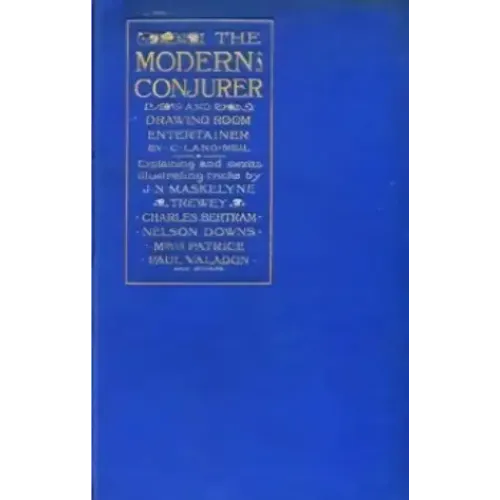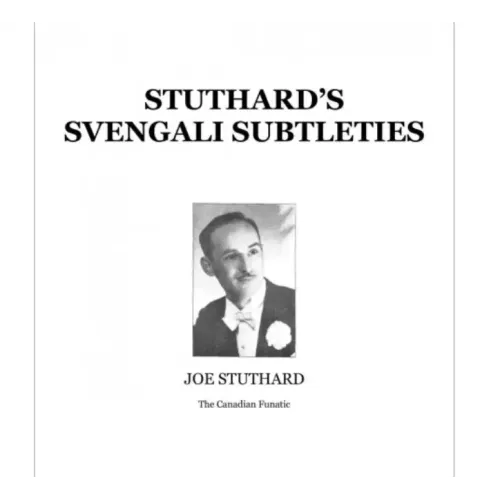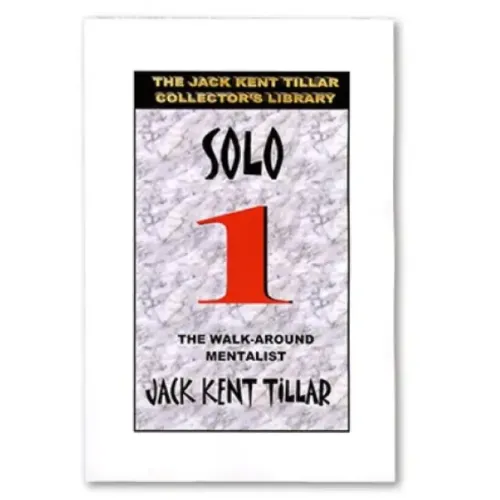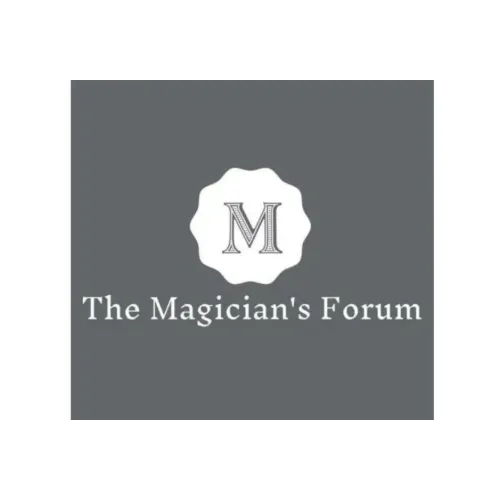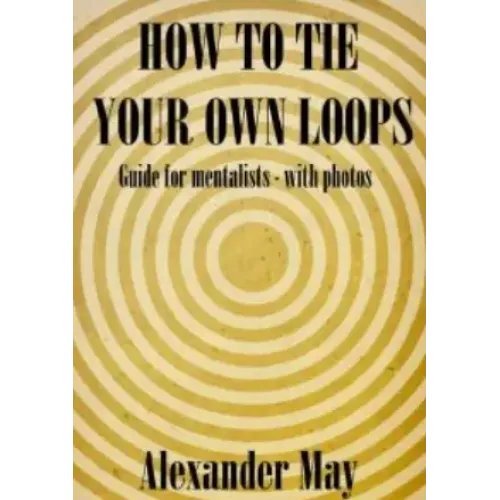The Modern Conjurer by Charles Lang Neil
Original price was: $6.99.$2.99Current price is: $2.99.
Description
This is my favorite magic book. The reason for this is that it was a groundbreaking book at the time it appeared and its contents is excellent. It was the first magic book that had photos instead of drawings or engravings throughout. And the contents is fantastic. It is one of the few books with a large chapter on chapeaugraphy. Add to this great chapters on shadowgraphy, plate spinning and paper folding. A large part is devoted to card magic, magic with coins, balls, and handkerchiefs, and much much more. If I would have to select one book this would be it. It is a book not many people know about. But you will not be disappointed.
“The Modern Conjurer,” by C. Lang Neil, explaining the tricks of such masters of conjuring as Maskelyne, Trewey, Bertram, Patrice, Kennard, and others is published by the J. B. Lippincott Company. Four hundred pictures from photographs of actual tricks are included in the book. The same firm publishes “Romance of Modern Invention,” an account of airships, submarines, sun-motors, dirigible torpedoes, mono railways, telautographs, together with many anecdotes, by Archibald Williams, illustrated.
From the Notes and News section of the New York Times, Nov. 22, 1902.
Paul Fleming wrote:
The 1937 American reprint of The Modern Conjurer, which is the subject of this review, is substantially the same in content as the first edition which was published in England in 1903. It was then hailed as one of the most important works on magic ever published, and it remains just that today. It was produced with the cooperation of such notables as J. N. Maskelyne, Felicien Trewey, Charles Bertram, Paul Valadon, T. Nelson Downs, Ellis Stanyon, and several other accomplished performers who posed for the hundreds of photographic reproductions which illustrate the text. Incidentally, we believe that this was the first book to make extensive use of photographs to show the actual presentation of tricks by expert magicians-though T. Nelson Downs’ Modern Coin Manipulation, published in 1900, included a few dozen pictures of this kind.
The last hundred pages of this book are not likely to appeal strongly to readers who are interested primarily in conjuring. About a third of this space is used to explain parlor tricks and puzzles, and the other two-thirds are given to expositions of Plate-Spinning by Mr. Maskelyne, Chapeaugraphy and Shadowgraphy by M. Trewey, and Paper-Folding by Mr. Stanyon. Persons who think of these “arts” as being in some way related to magic may value this part of the book for the information it imparts, but others will probably be interested chiefly in the many pictures of these three men whose names are so well known in the field of conjuring.
But of magic itself, there is enough and to spare, and it is magic of a rare type. So far as we know, there is no other place in the literature of conjuring where one can find detailed explanations of the pet tricks of Charles Bertram, who performed for British royalty so often that he was known as “The King’s Conjurer,” or of the sleights of Paul Valadon, who co-starred with Kellar for several seasons and was announced by him as “the greatest exponent of pure sleight-of-hand in this or any other age.” Bertram’s contributions to this book include what we regard as unquestionably the best descriptions in print of “the pass” and “card palming,” and detailed instructions for doing The Cards Up The Sleeve, The Diminishing Cards, The Four-Ace Trick, The Aerial Mint, The Cups and Balls, and The Billiard Ball Trick – 55 pages and 87 illustrations in all. Fourteen pages and 34 halftone cuts are employed to explain the fine card manipulations for which Valadon was rightly famous.
But we have told only part of the story. There are explanations of The Rising Card Trick, The Thurston Rising Cards, The Cards from Pocket to Pocket, The Sun and Moon Trick, The Handkerchiefs and Soup Plates, The Chinese Rings, The Mutilated Parasol, and other first-class feats which are described interestingly and thoroughly with scores of illustrations.
Before us, as we write are the first and last editions of The Modern Conjurer. The American reprint is less handsome than its English predecessor. We understand that it was printed from the original plates which are now, in certain instances, somewhat the worse for wear, so that the impressions are less perfect than when the plates were new. However, the publisher has used excellent paper and good ink, and the result will satisfy anyone who is not unduly fussy about perfection in printing. Also, this 386-page volume is plainly but substantially bound in cloth. We ourselves are happy to own a copy of the first edition because it is a finer piece of bookmaking than the 1937 edition. But the latter should be in the library of every serious student of magic who cannot secure a copy of the earlier edition, which is now exceedingly scarce.
This book was rated one of the ten basic books for a working library of conjuring by H. Adrian Smith, historian, collector and owner of the largest private magic library in his time. Other books in this top 10 list are
The Art of Magic by T. Nelson DownsThe Expert at the Card Table by S.W. ErdnaseMagicians’ Tricks by Henry Hatton and Adrian PlateModern Magic by Prof. HoffmannMore Magic by Prof. HoffmannLater Magic by Prof. HoffmannOur Magic by Maskelyne and DevantTarbell Course by Harlan TarbellGreater Magic by John Northern Hilliard
1st edition, 1902, Lippincott; reprint, 1937, David Kemp & Company, New York; 386 pages.
SLEIGHTS USED IN CARD TRICKSTwo-handed PassOne-handed PassTo Palm CardsTo Palm Cards from Bottom of PackContinuous Back and Front PalmFalse ShuffleTo Force CardsThe ChangeDealing SecondsDealing Seconds from Bottom of PackTo Change Front CardSIMPLE CARD TRICKSTelling Cards Cut by AudienceCatching a Chosen Card from Pack in the AirNovel Discovery of a Chosen CardTo Shake a Card through a HandkerchiefADVANCED CARD TRICKSManipulations with CardsPassing Twelve Cards up SleeveThe Diminishing CardsBack Palming and Recovery of Four CardsDiscovering a Chosen Card BlindfoldedThe Three Card Trick (a new method)The Rising CardsThe “Thurston” Rising CardsThe Four-Ace TrickPassing Cards from Pocket to PocketSLEIGHTS USED IN COIN TRICKSTo PalmTo PassThe Continuous Back and Front PalmThe French DropTo Change a CoinTRICKS WITH COINSTo Extract a Coin from a Pocket-handkerchiefThe Cap and PenceDisappearance of a Coin Wrapped in PaperTen Coins Passed from Left Hand to Glass in RightThe Aerial MintTRICKS WITH BALLSThe Cups and BallsThe Billiard-ball TrickHANDKERCHIEF TRICKSProduction of Hen’s Eggs from a HandkerchiefThe Sun and Moon TrickThe Handkerchiefs and Soup PlateHandkerchief, Watch, and GlassThe Changing HandkerchiefsThe Mysteriously Joined HandkerchiefsMISCELLANEOUS TRICKSThe Chinese RingsCoin, Card, and PaperThe Mutilated ParasolThe Flag TrickThe Ring on StickThe Flower TrickThe Tambourine TrickPARLOUR TRICKSTwo CorksSuspended KnifeSafety Reading LampTo Balance Plate on NeedleBottle CannonShark in Fish-pondNovel Soup Tureen StandSimple Handkerchief TrickDodge with a SixpenceExperiment with CorksPins into Glass Full of WaterMagnetised PaperA Simple Coin TrickTo Pick up Floating BallHome-made CinematographEgg and Bottle TrickWineglass PuzzleTo Pass Yourself through a Playing CardPerpetual MotionHousekeeper’s Weighing MachineA Dangerous TrickAtmospheric PressureTo Lift Three Matches with OneCup of Tea on KnifeTo Balance a PencilBrute Force UselessNew Umbrella StandElectricity on the Spot”Try-your-Lung Power”A Cheap SprayerCardboard Figure Blows Out and Lights CandleSuperior to Spirit-levelObjects Suspended without SupportTo Lift Four Straws with a FifthA Ludicrous ExperimentA Similar FeatBurnt ThreadDancing BubblesBoring Hole through HalfpennyHow Water DeceivesNovel Way to Slice a PearJapanese Ball TrickMagnetised MarionettesBridge of MatchesTo Empty Glass of Water with BottleBoring Hole through a PinEgg SpinningSuspending Glass of WaterA Scissors PuzzleThe Travelling EggPlate SpinningChapeaugraphyPaper FoldingShadowgraphy
word count: 70794 which is equivalent to 283 standard pages of text



